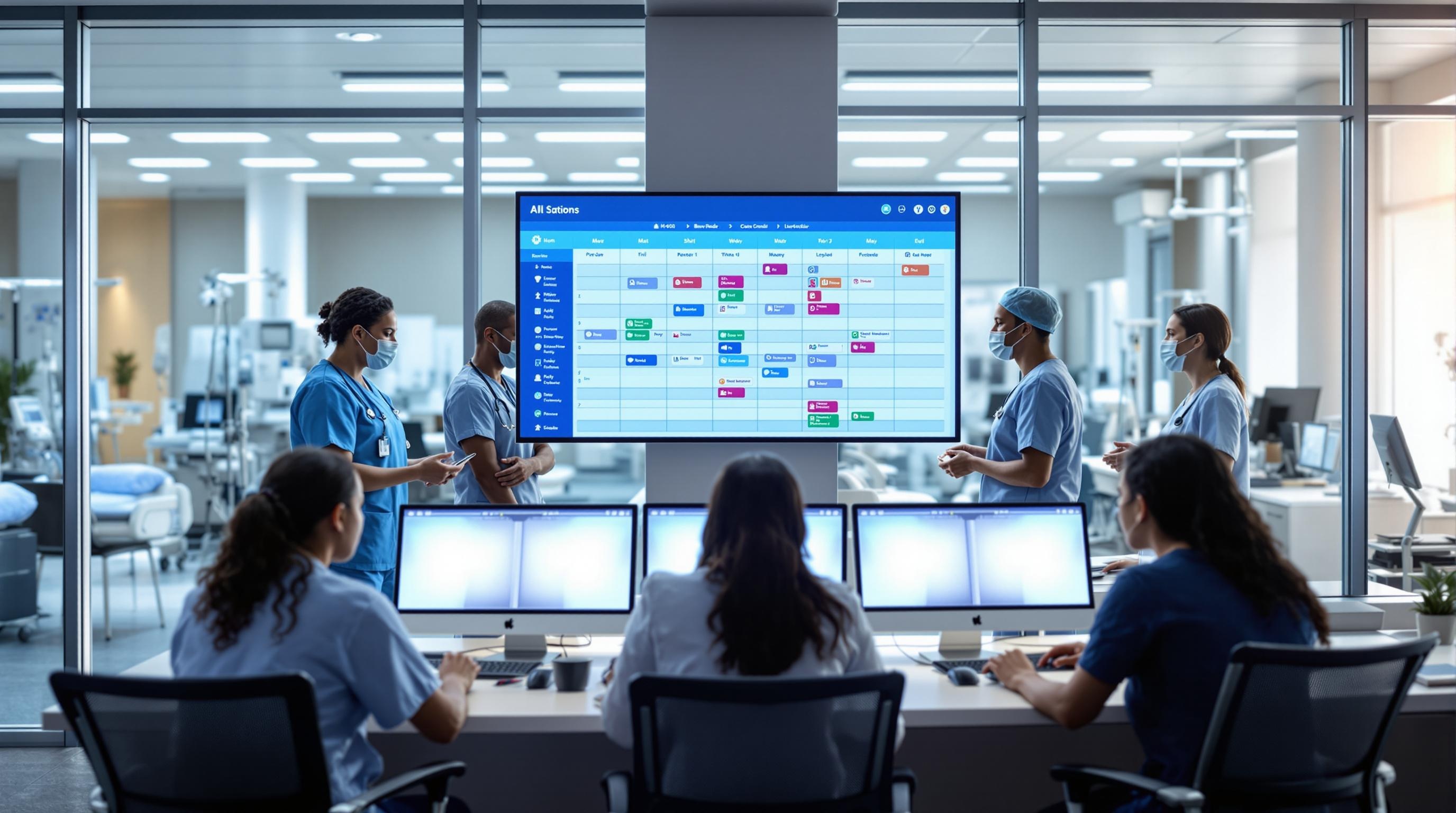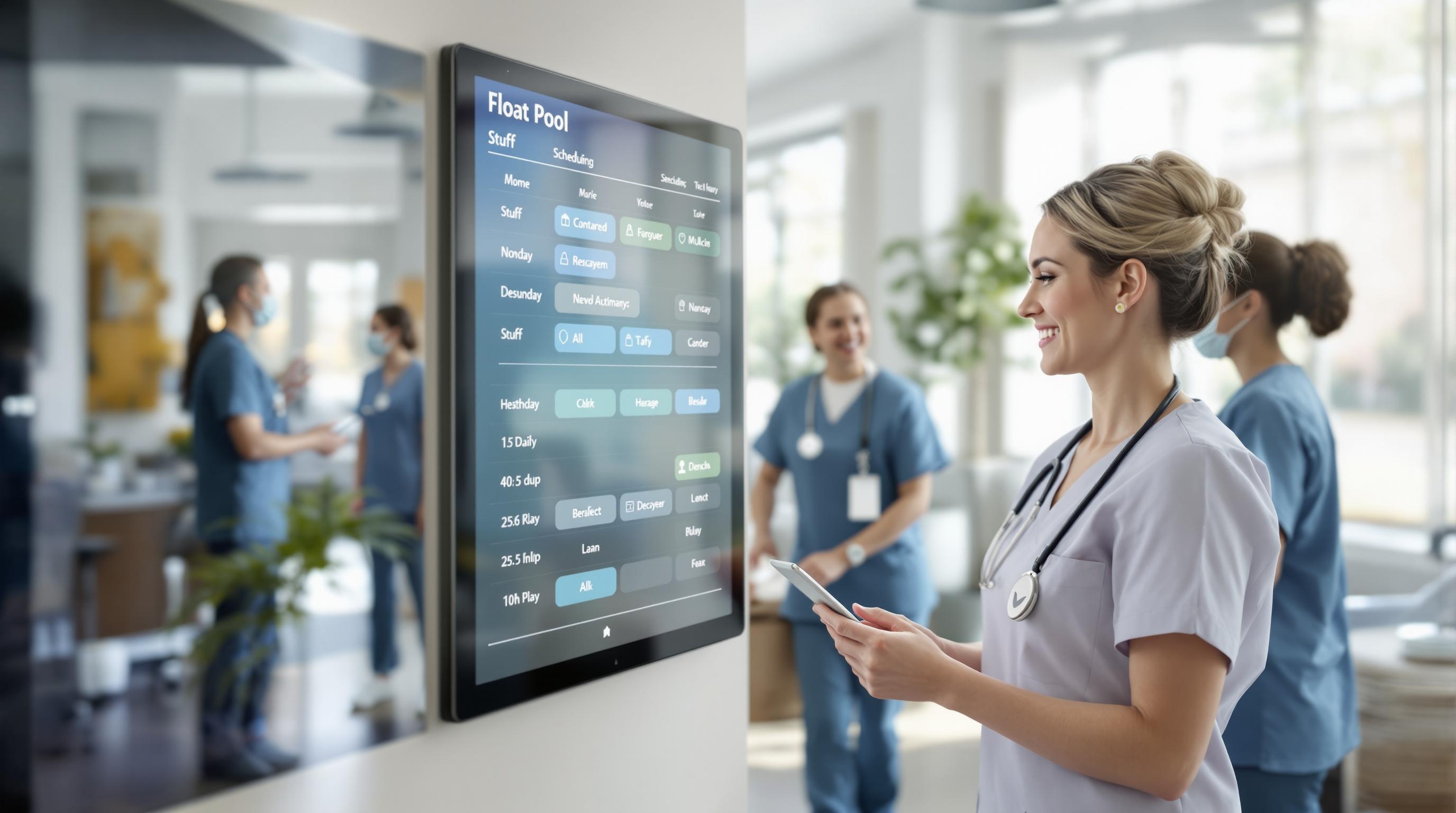Automated Nursing Reports Generation: Boost Efficiency in SNFs
Discover how automated nursing reports streamline documentation, reduce staff burden, and improve care quality in skilled nursing facilities.
Quick Navigation
- 1. Introduction
- 2. Current Challenges in Automated Nursing Reports Generation
- 3. How Sparkco AI Transforms Automated Nursing Reports Generation
- 4. Measurable Benefits and ROI
- 5. Implementation Best Practices
- 6. Real-World Examples
- 7. The Future of Automated Nursing Reports Generation
- 8. Conclusion & Call to Action
1. Introduction
Did you know that nurses spend up to one-third of their working hours on administrative tasks rather than providing direct patient care? Recent studies highlight a growing challenge in skilled nursing facilities: the overwhelming burden of documentation. As the demand for skilled nursing care surges—driven by an aging population and ongoing staffing shortages—nurses are increasingly caught between caring for residents and completing time-consuming reports. This administrative overload not only contributes to burnout but can also compromise the quality and continuity of care.
Fortunately, the landscape of nursing documentation is undergoing a dramatic transformation. From traditional paper charts to advanced electronic health records (EHRs), and now the integration of artificial intelligence (AI), technology is revolutionizing how nurses record and report patient information. Automated nursing report generation, powered by AI and smart software, is emerging as a game-changer—streamlining workflows, reducing errors, and allowing nurses to reclaim valuable time for hands-on care.
In this article, we’ll dive into how automated reporting tools are reshaping skilled nursing facilities. We’ll explore the latest trends in documentation, examine the potential of AI to relieve administrative burdens, and highlight real-world benefits for both nurses and residents. Whether you’re a facility administrator, nursing professional, or healthcare technology enthusiast, read on to discover how automation is paving the way for a more efficient, person-centered future in skilled nursing care.
2. Current Challenges in Automated Nursing Reports Generation
Automated nursing report generation is transforming documentation practices in healthcare facilities, promising efficiency and accuracy. However, many organizations encounter significant challenges when implementing and relying on automated reporting tools. These pain points impact daily operations, regulatory compliance, and ultimately, patient care outcomes.
-
1. Data Quality and Integration Issues
Automated systems rely on accurate data from Electronic Health Records (EHRs) and other digital sources. A HealthIT.gov report found that only 89% of US hospitals had adopted basic EHRs by 2021, and data silos remain common. Inconsistent data formats and incomplete records can result in misleading or error-filled nursing reports, compromising care decisions.
-
2. Limited Customization and Flexibility
Automated tools often lack the flexibility to address unique facility workflows or specialty-specific reporting needs. According to a 2021 study in BMC Nursing, 37% of nurses reported that automated documentation templates did not fit their clinical practice, leading to time-consuming manual edits and reduced workflow efficiency.
-
3. Training and User Adoption Barriers
Successful implementation requires comprehensive staff training. A 2020 survey revealed that 42% of nursing staff felt inadequately trained on new reporting technology, causing resistance to adoption and inconsistent use, which undermines automation’s potential benefits.
-
4. Compliance and Regulatory Risks
Automated reporting must comply with standards such as HIPAA, the Joint Commission, and CMS documentation requirements. A missed field or incorrect auto-population can trigger compliance violations, risking financial penalties. The Office for Civil Rights (OCR) reported $28.7 million in HIPAA fines in 2022 alone (HHS.gov).
-
5. Alert Fatigue and Information Overload
Automated reports can inadvertently generate excessive alerts or redundant information. Studies show that 49% of nurses experience alert fatigue, which can lead to important warnings being missed or ignored (PubMed). This directly impacts patient safety and outcomes.
-
6. Data Security and Privacy Concerns
Automation increases the volume of sensitive patient data being processed, elevating cybersecurity risks. In 2023, the healthcare industry experienced a 55% increase in ransomware attacks (HIPAA Journal), highlighting the vulnerability of automated systems to breaches.
-
7. High Implementation and Maintenance Costs
Deploying and maintaining automated reporting solutions requires significant investment. A Health Affairs analysis estimates EHR-related costs can exceed $1 million for a mid-sized facility, often straining budgets and delaying upgrades or optimizations.
These challenges highlight that while automated nursing report generation holds immense promise, healthcare facilities must navigate complex operational, compliance, and patient care risks. Addressing these pain points with strategic planning, robust training, and ongoing evaluation is critical to maximizing the value of automation in clinical documentation.
3. How Sparkco AI Transforms Automated Nursing Reports Generation
Automated nursing report generation is essential for skilled nursing facilities aiming to streamline workflows, reduce errors, and meet regulatory requirements. Traditional manual documentation is not only time-consuming and error-prone but also creates compliance risks and administrative burdens. Sparkco AI overcomes these challenges through advanced automation and intelligent technology, enabling facilities to focus on delivering high-quality patient care.
-
Seamless Data Aggregation from Multiple Sources
Sparkco AI automatically collects and unifies data from diverse hospital systems—such as EHRs, medication records, and staffing schedules—eliminating the need for manual data entry. By integrating disparate data streams, Sparkco ensures that nursing managers have a comprehensive, up-to-date view without searching through multiple platforms. -
Real-Time Error Detection and Correction
Errors in manual documentation, such as missing information or incorrect patient-to-nurse ratios, can lead to regulatory penalties. Sparkco AI uses intelligent checks to identify omissions and inconsistencies as reports are generated, prompting immediate corrections. This proactive approach dramatically reduces compliance risks and ensures documentation accuracy. -
One-Click Regulatory Compliance Reporting
Meeting regulatory standards, such as those requiring documentation of patient-nurse ratios, is simplified with Sparkco’s automated templates. Reports are generated in the required formats with a single click, saving hours of administrative effort and ensuring every submission aligns with current regulations. -
Customizable Visualization and Analytics
Sparkco AI transforms raw data into clear, actionable dashboards and visual summaries. Nursing managers can instantly see staffing trends, patient loads, and compliance status, making it easy to spot issues and make informed decisions—without sifting through complex spreadsheets. -
Intuitive User Interface and Workflow Automation
The platform is designed for ease of use, guiding users through each step of the documentation process. Routine tasks—such as daily census reporting or shift summaries—are fully automated, freeing up valuable nursing time and reducing administrative fatigue. -
Flexible Integration with Existing Systems
Sparkco AI offers robust APIs and plug-and-play integration capabilities, allowing seamless connection with existing EHRs, HR systems, and scheduling tools. This ensures a smooth transition, minimal disruption, and maximum return on technology investments.
By leveraging advanced AI and automation, Sparkco AI eliminates the inefficiencies and risks associated with manual nursing report generation. The system empowers skilled nursing facilities to achieve regulatory compliance, improve documentation accuracy, and focus more resources on patient care—all with a user-friendly, easily integrated solution.
4. Measurable Benefits and ROI
ROI and Measurable Benefits of Automated Nursing Report Generation
Automated nursing report generation is transforming skilled nursing facilities by streamlining workflows, reducing manual errors, and optimizing staff productivity. The adoption of digital solutions for nursing documentation not only enhances care quality but also delivers a compelling return on investment (ROI) through measurable time, cost, and compliance improvements. Below are key data-driven benefits supported by industry research and case studies.
-
Significant Time Savings:
Automated report generation can reduce nursing documentation time by up to 30-50%. A study by HealthIT.gov found that implementing electronic documentation systems saved nurses an average of 24-38 minutes per shift, enabling them to spend more time on direct patient care.
-
Cost Reduction:
Facilities report up to $50,000 annual savings per 100 beds by minimizing overtime and agency staff usage, according to a Becker’s Hospital Review analysis. Automated workflows cut down on administrative overhead and reduce the need for manual data entry.
-
Error Reduction:
Automated nursing reports decrease documentation errors by as much as 70%. A study published in JMIR Medical Informatics demonstrated that structured electronic reporting markedly reduced omissions and inaccuracies, improving patient safety and care continuity.
-
Compliance Improvements:
Automated systems can increase compliance with regulatory documentation standards by over 90%. According to the Journal of Nursing Care Quality, facilities using automated reporting solutions achieved a 98% compliance rate with CMS and Joint Commission guidelines, versus 80-85% with manual processes.
-
Audit Readiness:
With digital archiving and instant retrieval, facilities reduce audit preparation time by 60% on average. This efficiency not only mitigates risk but also supports faster, smoother regulatory reviews (source).
-
Improved Staff Satisfaction:
Nurses using automated documentation tools report a 25-40% reduction in work-related stress and a 20% increase in job satisfaction (source), contributing to lower turnover rates.
-
Faster Billing and Reimbursement:
Automation accelerates the billing cycle by up to 35%, ensuring timely and accurate reimbursement through complete and legible documentation (source).
-
Data-Driven Quality Improvement:
Automated reports enable real-time analytics, supporting targeted interventions and continuous quality improvement. Facilities leveraging these insights have demonstrated up to a 15% improvement in key quality metrics within the first year (source).
In summary, the transition to automated nursing report generation offers immediate and sustainable ROI, including substantial time and cost savings, risk mitigation, and enhanced clinical outcomes. Facilities that embrace automation are better positioned to meet regulatory requirements, retain staff, and deliver higher quality care.
5. Implementation Best Practices
Automated nursing report generation can streamline documentation, enhance compliance, and improve care coordination in skilled nursing facilities. To ensure a successful rollout, it’s crucial to follow proven implementation best practices. Below are seven actionable steps, complete with practical tips, common pitfalls, and change management considerations to help your facility maximize the benefits:
-
Conduct a Needs Assessment
Begin by evaluating your facility’s current reporting workflows and identifying specific pain points.
- Tip: Involve frontline nursing staff in feedback sessions to uncover documentation bottlenecks.
- Pitfall: Avoid implementing generic solutions that don’t address your unique needs.
-
Select the Right Technology Partner
Choose an automated reporting solution that integrates seamlessly with your EHR and supports regulatory requirements (such as CMS guidelines).
- Tip: Prioritize vendors with proven experience in long-term care and robust customer support.
- Pitfall: Don’t overlook interoperability—lack of integration leads to data silos.
-
Customize Report Templates
Work with your vendor to tailor report templates to your facility’s clinical workflows and compliance standards.
- Tip: Involve clinical leadership to ensure templates meet both clinical and surveyor expectations.
- Pitfall: Avoid one-size-fits-all templates that fail to capture essential patient information.
-
Develop a Comprehensive Training Program
Equip nursing staff with hands-on training sessions, demonstrations, and ongoing support resources.
- Tip: Use super-users or champions to provide peer-to-peer support and foster adoption.
- Pitfall: Don’t assume a single training session is enough—continuous learning is key.
-
Implement a Phased Rollout
Start with a pilot unit before expanding facility-wide, allowing time to gather feedback and troubleshoot.
- Tip: Monitor key metrics (e.g., documentation time, error rates) to assess impact.
- Pitfall: Avoid launching across all units simultaneously, which can overwhelm staff and IT.
-
Solicit Continuous Staff Feedback
Establish regular check-ins to address challenges, collect suggestions, and recognize successes.
- Tip: Use anonymous surveys to encourage honest input and foster trust.
- Pitfall: Don’t ignore frontline feedback—staff buy-in drives sustained adoption.
-
Evaluate and Optimize
Regularly review system performance, user satisfaction, and compliance outcomes to refine your approach.
- Tip: Schedule quarterly reviews to adapt to regulatory changes (such as new CMS surveyor guidance).
- Pitfall: Avoid a “set it and forget it” mindset—continuous improvement ensures long-term success










